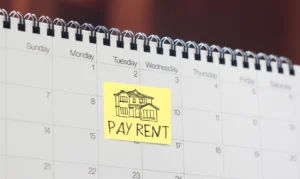Setting Rent in a Declining Market
by Robert Griswold
 Q: I am a landlord with a high-end rental property located in a very nice, older part of town.
Q: I am a landlord with a high-end rental property located in a very nice, older part of town.
The rental is a 90-year-old home in good condition but without a lot of remodeling. It has 4 bedrooms, 3 1/2 baths, two fireplaces, a spectacular view, a garden and a one-car garage.
A little less than a year ago I rented the property for $4,800 per month. I thought that the rent was very reasonable at the time, as I had many prospective tenants.
But this year the rental market has clearly softened and the tenants have already indicated that they may want to move just because other rental homes are more affordable.I am really hoping that they sign a new lease and would like to offer them a fair rental rate.
Can you tell me by what percentage rentals of this type have come down since they originally signed the lease?
I really want the current tenants to stay because they have kept up the property and not caused any problems, but this property is an investment and I need as much income as I can get to pay my own living expenses.
What would you suggest?
A: You are quite fortunate to have great tenants in your rental home. I would strongly encourage you to work with the current tenants and see if you cannot mutually agree on a reasonable rental rate for this unique property in the current market. Many rental homes are unique, but a 90-year-old home with a spectacular view is not easy to match when looking at comparable rental properties.However, other than simply negotiating directly with the tenants to find out what they are willing to pay under a new lease, you need to perform a market survey. While finding comparable properties in your area (if any) will be difficult, I would suggest you contact real estate agents and property managers — or your local apartment association or another real estate organization or even a local governmental agency — to see how the general market rents have fallen in the last 12 months.
Use all of this information to get a general idea of how much rents have declined in your area and then contact the tenant.
While you want the highest possible rent, it is wise to think about what rent you might achieve if you did find the property vacant and needed to attract new tenants. You also need to factor in the loss of rent and the renovation and marketing costs and any concessions that you would have to offer.
Of course, the tenants will point out the lower rental rate at another rental home and all of the money they will save. But they need to temper those theoretical savings with all of the costs associated with moving from such a large home as well as the extensive loss of productive time and the simple inconvenience of moving.
Hopefully, you will be able to reach an agreement on a new lease.
This column on issues confronting tenants and landlords is written by property manager Robert Griswold, author of “Property Management for Dummies” and co-author of “Real Estate Investing for Dummies.”E-mail your questions to Rental Q&A at [email protected]. Questions should be brief and cannot be answered individually. What’s your opinion? Leave your comments below or send a letter to the editor. To contact the writer, click the byline at the top of the story.
Copyright 2009 Inman News
See Robert Griswold’s featue, Is Non-Smoking Policy Illegal?
American Apartment Owners Association offers discounts on products and services related to your commercial housing investment including REAL ESTATE FORMS, tenant debt collection, tenant background checks, insurance and financing. Find out more at www.joinaaoa.org.
See our feature, How to Know if You Are Charging Enough Rent.
See Rents Decline for First Time in Five Years While Vacancy Rates Rise.
To subscribe to our blog, click here













 Accessibility
Accessibility